Fourteenth Dynasty of Egypt
The Fourteenth Dynasty of Egypt was a series of rulers reigning during the Second Intermediate Period over the Nile Delta region of Egypt. It lasted between 75 (c. 1725–1650 BC) and 155 years (c. 1805–1650 BC), depending on the scholar. The capital of the dynasty was probably Avaris.[1] The 14th Dynasty existed concurrently with the 13th Dynasty based in Memphis. The rulers of the 14th Dynasty are commonly identified by Egyptologists as being of Canaanite (Semitic) descent, owing to the distinct origins of the names of some of their kings and princes, like Ipqu (West Semitic for "grace"), Yakbim ("ia-ak-bi-im", an Amorite name), Qareh (West Semitic for "the bald one"), or Yaqub-Har.[1] Names in relation with Nubia are also recorded in two cases, king Nehesy ("The Nubian") and queen Tati.
Egypt | |||||||||
|---|---|---|---|---|---|---|---|---|---|
| ca. 1725 BC–ca. 1650 BC | |||||||||
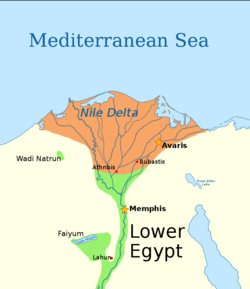 In orange, the territory possibly under control of the 14th dynasty according to Ryholt.[1] | |||||||||
| Capital | Avaris | ||||||||
| Common languages | Egyptian language | ||||||||
| Religion | ancient Egyptian religion | ||||||||
| Government | Absolute monarchy | ||||||||
| Historical era | Bronze Age | ||||||||
• Established | ca. 1725 BC | ||||||||
• Disestablished | ca. 1650 BC | ||||||||
| |||||||||
| Periods and Dynasties of Ancient Egypt | ||||||||||||||||||
|---|---|---|---|---|---|---|---|---|---|---|---|---|---|---|---|---|---|---|
|
All years are BC | ||||||||||||||||||
|
Early
|
||||||||||||||||||
|
||||||||||||||||||
|
||||||||||||||||||
|
||||||||||||||||||
|
||||||||||||||||||
|
||||||||||||||||||
|
||||||||||||||||||
|
||||||||||||||||||
|
Ptolemaic (Hellenistic)
|
||||||||||||||||||
|
See also: List of Pharaohs by Period and Dynasty Periodization of Ancient Egypt | ||||||||||||||||||
Chronology
The 14th Dynasty is sometimes combined with the 11th, 12th and 13th Dynasties in the period Middle Kingdom of Egypt, though the 14th Dynasty overlaps at least partially with either (or both of) the 13th Dynasty and the 15th Dynasty. More commonly, the 14th Dynasty is grouped with the 13th, 15th, 16th and 17th in the Second Intermediate Period.
Such are the gaps in the knowledge of the 14th Dynasty, that its absolute chronological position is debated and varies by as much as 75 years among authorities. Egyptologist Kim Ryholt proposes that the 14th Dynasty emerged during the late 12th Dynasty, c. 1805 BC, during or shortly after Sobekneferu's rule. He contends that the local Canaanite population residing in the eastern Delta declared its independence and staved off possible attempts from the 13th Dynasty Memphite kings to recover the Delta. According to Ryholt, the 14th Dynasty thus lasted from 1805 BC until its demise under the Hyksos 15th Dynasty, c. 1650 BC, i.e. lasting 155 years.
This hypothesis is not shared by some Egyptologists such as Manfred Bietak, Daphna Ben Tor and James and Susan Allen, who argue that the 14th Dynasty cannot have emerged before the mid 13th Dynasty, c. 1720 BC, after the reign of Sobekhotep IV.[2][3] In particular, they argue that the evidence from the strata levels in which 14th Dynasty seals were discovered conclusively establishes that the 14th Dynasty was only contemporary with the 13th Dynasty in the last half century of the latter's existence, i.e. after c. 1700 BC. Additionally, Manfred Bietak has dated the inscriptions and monuments of Nehesy, possibly the second ruler of the dynasty, to around 1700 BC as well.[4]
Following the very short reign of Nehesy, most scholars–among them, Manfred Bietak and Kim Ryholt–agree that the Delta region was struck by a prolonged famine and perhaps a plague lasting until the end of the 14th Dynasty.[1][5] The same famine may have affected the 13th Dynasty, which also exhibits instability and numerous ephemeral kings in its last 50 years of existence, from c. 1700 BC until 1650 BC. The weakened state of both kingdoms may explain, in part, why they fell rapidly to the emerging Hyksos power c. 1650 BC.[1]
Seat of power
The Manethonian tradition credits the Fourteenth Dynasty with as many as 76 kings ruling from Xois rather than Avaris. However, Egyptologist Kim Ryholt notes that the Turin Canon mentions only c. 56 kings and does not have enough space to have recorded over 70 kings. Ryholt also points to excavations at Avaris which revealed the existence of a large royal palace dating to the second intermediate period. One of its courtyards housed a statue of a king or high-ranking official, over twice life-sized, and wearing non-Egyptian attributes. For these reasons, Ryholt and most Egyptologists share the view that Avaris rather than Xois was the seat of power of the 14th Dynasty.[1]
Extent of rule and foreign relations
The precise borders of the 14th Dynasty state are not known due to the general scarcity of monuments left by this dynasty. In his study of the second intermediate period however, the Egyptologist Kim Ryholt concludes that the territory directly controlled by the 14th Dynasty roughly consisted of the Nile delta, with its border located around Athribis in the western Delta and Bubastis in the east.[1]
Seals attributable to the 14th Dynasty have been found in Middle and Upper-Egypt, then 13th Dynasty territory, and as far south as Dongola, beyond the third cataract. To the north, seals have been found in the southern Levant, principally along the Mediterranean coast and as far north as Tell Kabri, in modern-day Israel.[1] This indicates the existence of an important trade with the 13th Dynasty, Canaanite city-states, and Nubia.[1] Ryholt further proposes that king Sheshi, whom he sees as a 14th dynasty ruler, married a Nubian princess, queen Tati, to strengthen relations with the Kushite kingdom.[1]
Rulers
The order of rulers for this dynasty is established by the Turin Royal Canon and is widely accepted, except for the first five rulers, which are given below after Ryholt.[1] The names of these rulers is not given on the Turin Canon, except possibly for one, and Ryholt proposes that they were mentioned as wsf in the list, which denotes a lacuna in the original document from which the list was copied in the Ramesside period.[1] Rather, Ryholt identifies the first five kings thanks to a seriation of their seals. His conclusions are debated however in Ben Tor's study of the strata levels in which seals attributed to the first five kings have been found. Ben Tor concludes that Sheshi's, 'Ammu's and Yakbim's reigns date to the second half of the Hyksos 15th dynasty and are not contemporary with the 13th dynasty. Thus according to Ben Tor, these kings were most likely minor vassal rulers of the Hyksos kings reigning in the Nile Delta.[2]
| Name of King | Image | Dates | Comments |
|---|---|---|---|
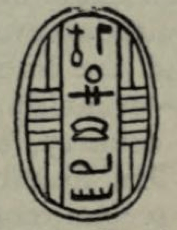 | Chronological position is contested, maybe a vassal of the 15th dynasty | ||
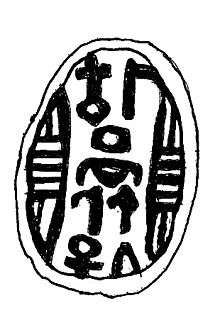 | Chronological position is contested | ||
| Chronological position is contested | |||
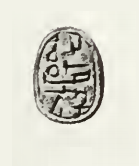 | Chronological position is contested, maybe a vassal of the 15th dynasty | ||
.jpg) | Attested by over 300 scarab-seals, possibly married to queen Tati who was a Kushite. Chronological position is contested, maybe a vassal of the 15th dynasty |
The following rulers are not controversial, being established by the Turin canon as well as, for a few of them, by contemporary sources:
| Name of King | Image | Dates | Comments |
|---|---|---|---|
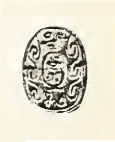 | Best attested king of the dynasty, he left his name on two monuments at Avaris. His name means "The Nubian".[6] | ||
| - | |||
| Turin canon: reigned 1 year, 5 months, 15 days | |||
| Turin canon: reigned 3 years [lost] months, 1 day | |||
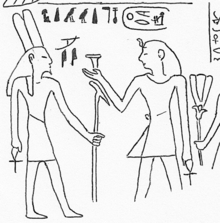 | Attested by a single stela from Saft el-Hinna, in the Delta[7] | ||
| Turin canon: reigned 1 year | |||
| - | |||
| - | |||
| Lost in the Turin kinglist | |||
| - | |||
| - | |||
| - | |||
| - | |||
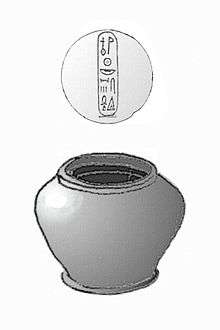 | Attested by a jar bearing his prenomen. At least 5 months of reign. | ||
| wsf in the Turin kinglist, indicating a lacuna in the document from which the list was copied | |||
| With Nehesy, Nebsenre and Merdjefare, only undisputed king known from contemporary sources | |||
| - | |||
| - | |||
| - | |||
| - | |||
| - | |||
| - | |||
| - | |||
| - | |||
| - | |||
| - | |||
| - | |||
| - | |||
| Eight lines lost in the Turin kinglist | |||
| - | |||
| - | |||
| - | |||
| Three lines lost in the Turin kinglist | |||
| - | |||
| - | |||
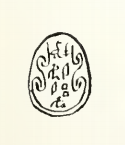 | - | ||
| Five lines lost in the Turin kinglist |
Finally, several rulers attested by contemporary artefacts and otherwise unknown from the Turin Canon may be dated to the 14th[1] or 15th Dynasty.[8] Their identities and chronological position remain unclear:
| Name of King | Image | Attestations |
|---|---|---|
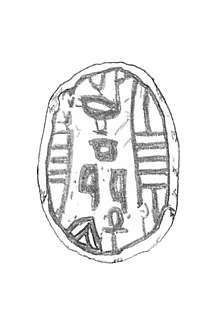 | ||
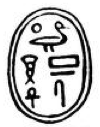 | ||
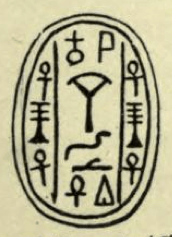 | ||
 | ||
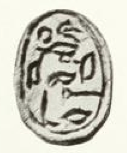 | ||
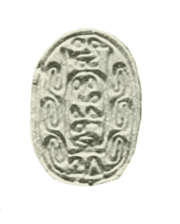 |
References
- Kim Ryholt, The Political Situation in Egypt during the Second Intermediate Period, Museum Tusculanum Press, (1997)
- Bulletin of the American Schools of Oriental Research (BASOR) 315, 1999, pp.47-73.
- Janine Bourriau, "The Second Intermediate Period (c.1650-1550 BC)" in Ian Shaw (ed.) The Oxford History of Ancient Egypt, Oxford University Press, 2000. pp.192 & 194
- Bourriau, "The Second Intermediate Period," pp.178-179, 181
- Manfred Bietak, "Egypt and Canaan During the Middle Bronze Age," BASOR, 281 (1991), pp. 21-72, esp. p. 38, available online
- Darrell D. Baker, The Encyclopedia of the Pharaohs: Volume I - Predynastic to the Twentieth Dynasty 3300–1069 BC, Stacey International, ISBN 978-1-905299-37-9, 2008, p. 277
- Kenneth Kitchen: Ramesside Inscriptions, Blackwell Publishing 1993, ISBN 0631184279, p.546
- Daphna Ben-Tor: Scarabs, Chronology, and Interconnections: Egypt and Palestine in the Second Intermediate Period, Volume 27 of Orbis biblicus et orientalis / Series archaeologica: Series archaeologica, Academic Press Fribourg 2007, ISBN 978-3-7278-1593-5, excerpts available online
Bibliography
- K.S.B. Ryholt (1998). The Political Situation in Egypt During the Second Intermediate Period, C1800-1550 BC. Museum Tusculanum Press. ISBN 8772894210.
- K.A. Kitchen (1993). Ramesside Inscriptions. Blackwell Publishing. ISBN 0631184279.
| Preceded by Thirteenth Dynasty |
Dynasty of Egypt 1725−1650 BC |
Succeeded by Fifteenth Dynasty |